沙丽金版法律英语
- 格式:ppt
- 大小:695.50 KB
- 文档页数:71
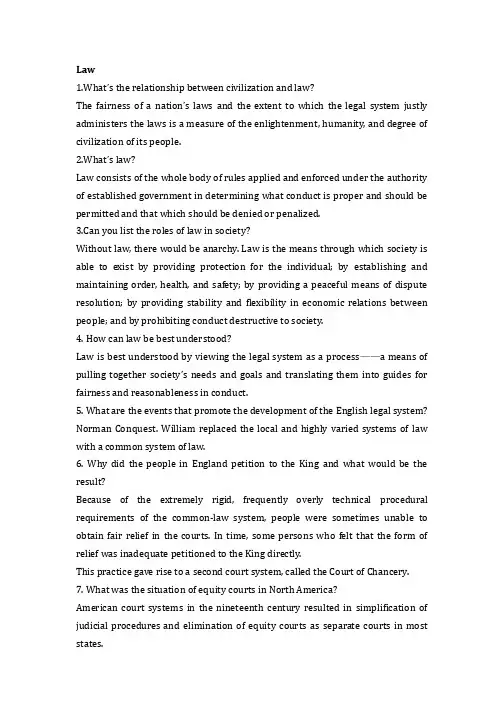
Law1.What’s the relationship between civilization and law?The fairness of a nation’s laws and the extent to which the legal system justly administers the laws is a measure of the enlightenment, humanity, and degree of civilization of its people.2.What’s law?Law consists of the whole body of rules applied and enforced under the authority of established government in determining what conduct is proper and should be permitted and that which should be denied or penalized.3.Can you list the roles of law in society?Without law, there would be anarchy. Law is the means through which society is able to exist by providing protection for the individual; by establishing and maintaining order, health, and safety; by providing a peaceful means of dispute resolution; by providing stability and flexibility in economic relations between people; and by prohibiting conduct destructive to society.4. How can law be best understood?Law is best understood by viewing the legal system as a process——a means of pulling together society’s needs and goals and translating them into guides for fairness and reasonableness in conduct.5. What are the events that promote the development of the English legal system? Norman Conquest. William replaced the local and highly varied systems of law with a common system of law.6. Why did the people in England petition to the King and what would be the result?Because of the extremely rigid, frequently overly technical procedural requirements of the common-law system, people were sometimes unable to obtain fair relief in the courts. In time, some persons who felt that the form of relief was inadequate petitioned to the King directly.This practice gave rise to a second court system, called the Court of Chancery.7. What was the situation of equity courts in North America?American court systems in the nineteenth century resulted in simplification of judicial procedures and elimination of equity courts as separate courts in most states.8.Was the statutes developed fast in North America? Why?9. What are the disadvantages of statues and the advantages of the common law rules?10. Who has the power to make the ordinances?The legislative body of a municipal corporationLegal System1.What is the relationship between the civil law system and Roman Law?The civil law is based on Roman Law.2.Who is the Justinian and what is his contribution?Byzantium Emperor. Compiling codes after the enthronement3.Which is the primary source of law in Europe, Roman Law or local laws?Local customs4.Why was the concept of codification developed in the 17th and 18th centuries?As an expression of both Natural Law and the ideas of the Enlightenment.5.What did the opponents of codification think about codification of law?Its opponents claimed that codification would result into the ossification of law.6.What is the main feature of common law?Its inclusion of extensive non-statutory law reflecting precedent derived from centuries of judgments by working jurists.7.What is the difference between statutes and regulations?Statues are enacted by a legislature, while regulations are promulgated by executive branch agencies pursuant to a delegation of rule-making authority from a legislature.8.Where should people go if they wanted to apply for injunctions before the20th century? Why?Courts of equity. Only courts of equity have the authority to do it.9.What is the difference between the selections of judges in civil law countriesand that in common law countries?Civil law judges are usually trained and promoted separately from advocates, whereas common law judges are usually selected from accomplished and reputable advocates.。
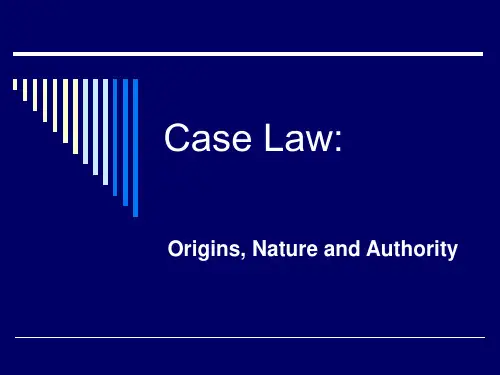
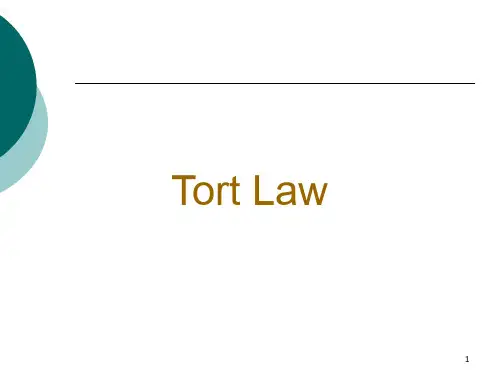
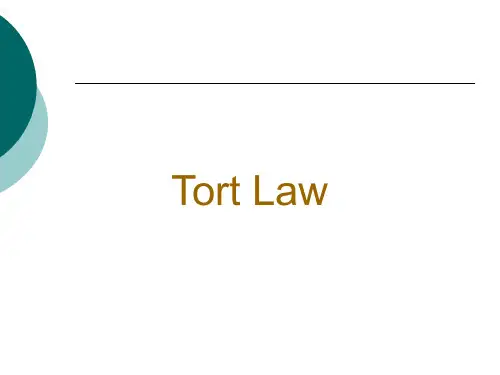
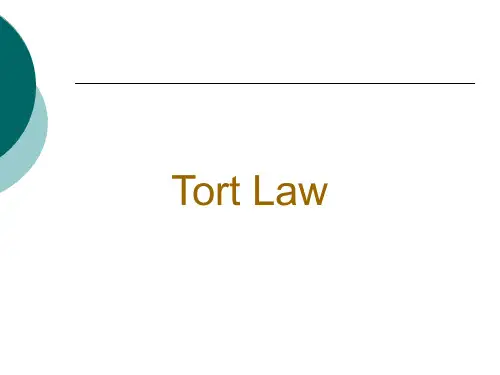
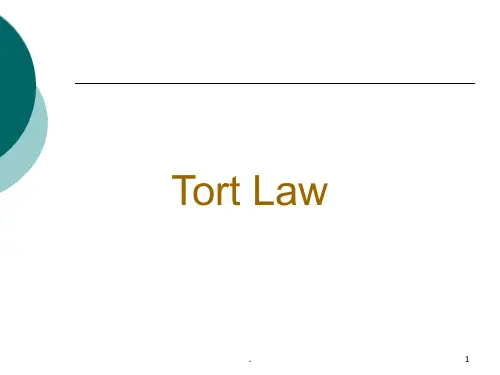
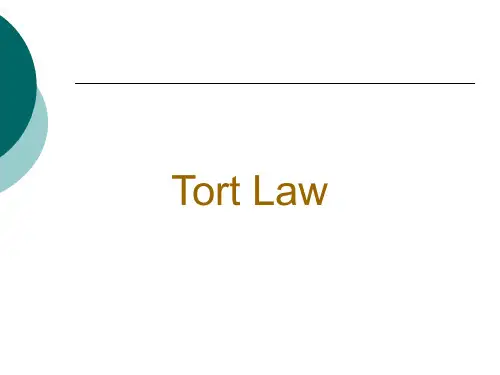

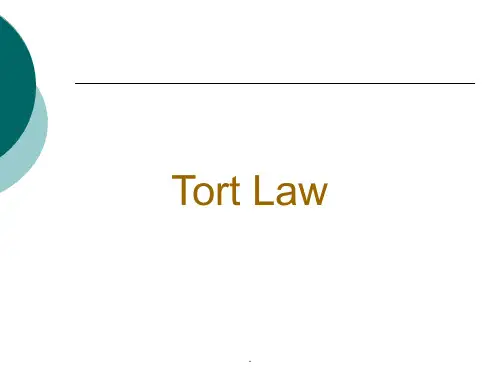
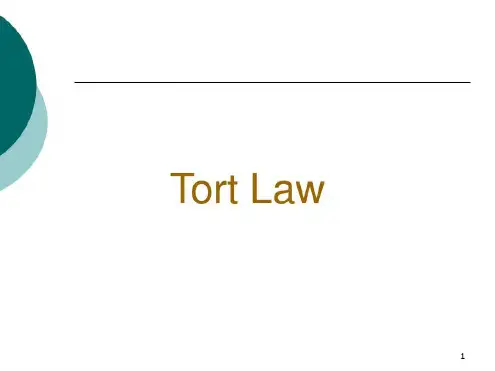
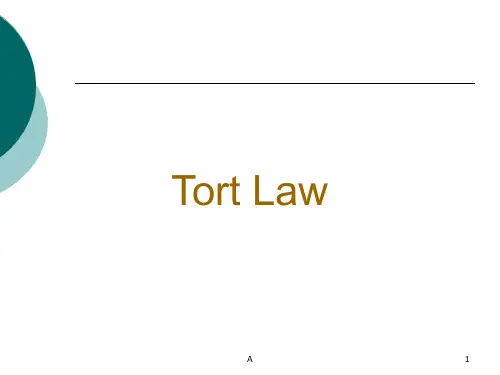
《法律英语》(沙丽金版)2011年第二版课文参考译文翻译整理人:新浪微博@我是空白白《法律英语》(沙丽金版)2011年第二版参考译文目录前言(必看) (2)Lesson 1 law(法律) (3)Lesson 2 Legal System(法律体系) (4)Lesson 3 Legal Education(法律教育) (6)Lesson 4 Court System(法院体系) (7)Lesson 5 Construction(宪法) (9)Lesson 6 Administrative Law(行政法) (10)Lesson 7 Criminal Law(刑法) (12)Lesson 8 Criminal Procedure(刑事诉讼程序) (13)Lesson 9 Civil Procedure(民事诉讼程序) (15)Lesson 10 Torts(侵权行为) (16)Lesson 11 Contract(合同) (18)Lesson 12 Property Law(物权法) (19)Lesson 13 Law of Corporation(公司法) (20)Lesson 14 Intellectual Property(知识产权) (22)Lesson 15 International Law(国际法) (23)Lesson 16 Evidence(证据) (24)后记 (26)前言(必看)1、此翻译并非权威翻译,而是技术含量不高的译文。
其中肯定有很多不恰当甚至错误的地方,所以仅供参考,欢迎各位同学指正。
(新浪微博@我是空白白)2、制作本译文动力源于兴趣,目的在于互相交流学习。
3、如果你只是想以此译文来应付老师上课的抽问,那么你大可不必下载或复制此文档,因为这样你对不起你自己。
4、本译文=老师的长难句注解(即划线部分。
我无意间在网上找到了部分老师传到网上的注解文档。
O(∩_∩)O )+1位往届同学的翻译+1位同届同学的翻译+课堂笔记+本人拙译(虽然本人英语不怎么好,但我会尽最大努力与大家分享所学到的知识)。